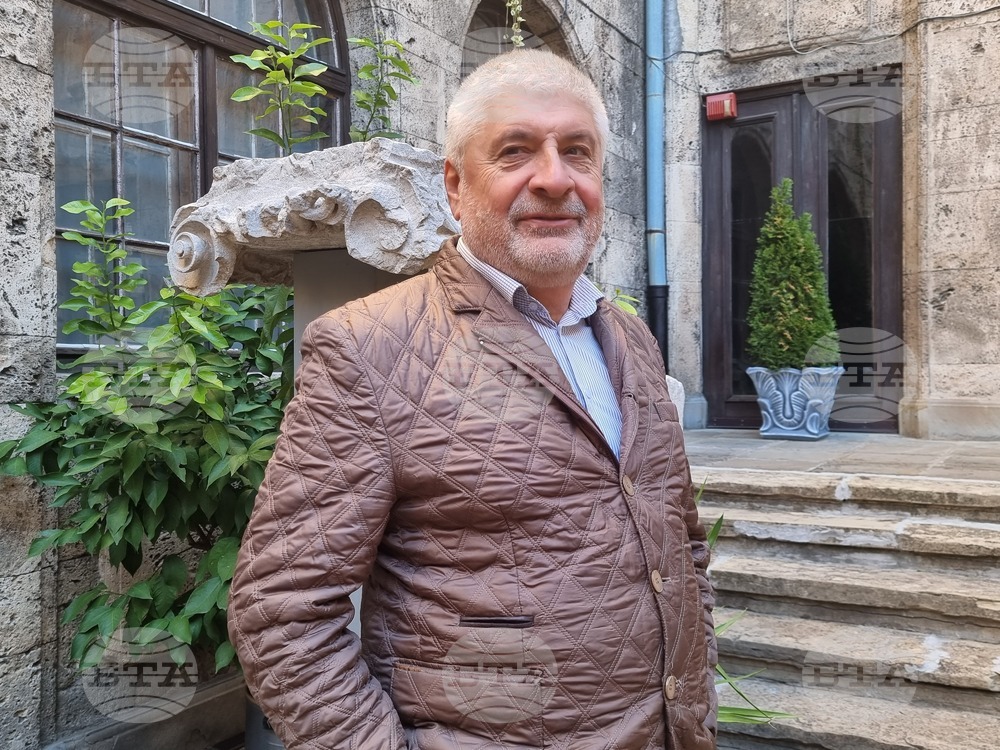site.btaSilver Kylix from Veliko Tarnovo History Museum Displayed in Thracian Heritage Exhibition


A silver kylix with a gilded engraving of the eighth feat of Heracles has been contributed by the Regional History Museum in Veliko Tarnovo to an exhibition dedicated to the Thracian heritage at the J. Paul Getty Museum in Los Angeles, Dr. Ivan Tsarov, told BTA.
The exhibit was among finds discovered in the area of Kapinovo village, some 18 km away from Veliko Tarnovo, during rescue archaeological activities in 1987. After its discovery, two-year long excavations began under the supervision of Prof. Diana Gergova.
The kylix is a cup for ritual drinking of wine during a feast, as feasts were one of the main ways of communication between the Thracian aristocrats in those times, said Tsarov. Each local ruler had a retinue of cronies and it was through feasts that he showed his favour to those invited.
The kylix was made in a workshop in ancient Greece and came to the local Thracians as a gift or spoils of war, experts believe. The height of the vessel is 4.1 cm, the diameter - 13 cm, and the weight 187.52 g. It is dated to the 4th century BC. This is believed to have been a ritual "burial" of vessels, carried out after a large assembly with the participation of the rulers of the tribal groups living in the vicinity.
The kylix has been displayed over the years in various exhibitions in France, the US, Italy, the Netherlands, both on its own and with other artefacts from the Kapinovo treasure.
There are two major archaeological finds from the time of the Thracians in this perimeter near Veliko Tarnovo, which are kept in the Regional History Museum. These are the treasures from the village of Kapinovo and from the burial of a Thracian aristocrat in the area of the village of Golemanite, which is located about 35 kilometers west of Kapinovo, said Tsarov. They were discovered accidentally, but they represent entire complexes, which is most valuable for archaeologists, Tsarov said.
He said, "The kilyx, which was part of a large set, was found as a property was being cleared and flattened out to build a holiday facility for a local radio equipment factory. First workers found some artefacts in May 1987 and then emergency excavations started under the leadership of Prof. Diana Gergova, which lasted two years. They also found a small silver phiale, which was also used in rituals, a gold ornament of interlaced chains with nine stylized acorns handing at the end of each strand, as well as three stylized almonds and a small amphora. It is this ornament that is the centerpiece of the treasure, but it is not included in the exhibits for the Getty Museum. The jewel was worn on a woman's head and produced a soft sound when she moved, an elegant hint at the aristocracy of its wearer. The treasure has been displayed in the United States, Japan, France and elsewhere around the world and continues to amaze with the craftsmanship of the unknown artisan 25 centuries ago. Several large bronze vessels have also been unearthed, and the restoration of one continues today because it is badly damaged."
He said that throughout this foothills region, as well as the plains, there are numerous indications that there was a well-developed Thracian civilization here. The territory of today's Veliko Tarnovo region was the ethnic and cultural border between different Thracian tribes and has not yet been explored in detail.
Tsarov said that the kilyx had to be restored because part of it was damaged by the machine leveling the property. Also, one of its handles was never found and a new one was made by the restorers with present-day material.
Also, one of the workers who found the treasure, tried to clean the vessel using baking soda, and thus ruined some of the goldleaf on the engraving at the bottom of the vessel.
It was the organizers of the exhibition who picked exactly this artefact among all the others, said Dr. Tsarov.
The Veliko Tarnovo History Museum was established 153 years ago. Its collection includes some 260,000 cultural valuables. The best represented period is when Tarnovo was the capital of Bulgaria in the Middle Ages. Every year, the museum's collection acquired some 1,000 new items, mostly coins and ceramics.
The museum is Bulgaria's largest and includes 31 sites and expositions, and covers all periods of history on Bulgarian lands. Some 500,000 people visit it annually, said Dr. Tsarov.
Fourteen Bulgarian museums with a total of over 150 artefacts are participating in an exhibition, Ancient Thrace and the Classical World: Treasures from Bulgaria, Romania, and Greece, at the J. Paul Getty Museum in Los Angeles. Bulgarian artefacts represent over 90% of all exhibits included in the exhibition, which will run from November 3 to March 3, 2025.
/PP/
Additional
news.modal.image.header
news.modal.image.text
news.modal.download.header
news.modal.download.text
news.modal.header
news.modal.text
